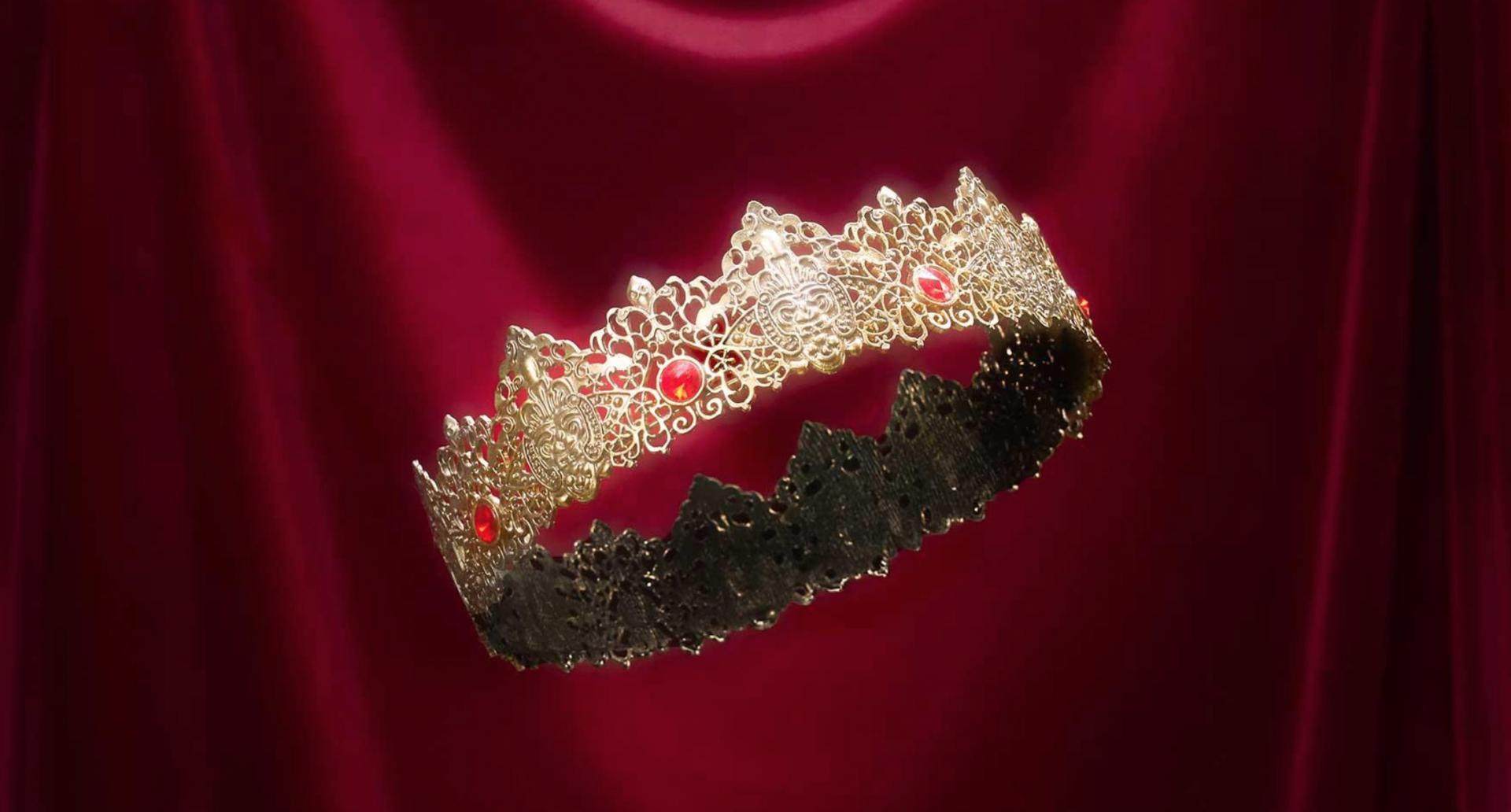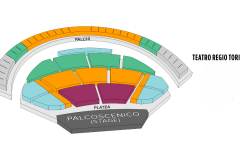Macbeth
February 2026 | ||||||
|---|---|---|---|---|---|---|
Mo | Tu | We | Th | Fr | Sa | Su |
Melodrama in four acts
Music by Giuseppe Verdi
Libretto by Francesco Maria Piave e Andrea Maffei
based on from the tragedy of the same name by William Shakespeare
Nothing needs to be said about Shakespeare's Macbeth: one cannot help but know and love the darkest and most profound meditation that Western civilization has produced on the themes of evil, power, destiny, guilt. Verdi set it to music in 1847, giving the world a work of terrifying power, cloaked in a black and shiny orchestral dress, in which he experiments with unprecedented wisdom with the "weapons" of Italian opera to evoke witches and ghosts from the Scottish mist: and so we have fiery cabalettas, demonic marches, infernal dances, and a type of veiled and suffocated singing, cared for in the smallest inflections. Nothing of the original tragedy is lost, if anything it is enriched. Verdi considered this his tenth opera the best he had composed up to that moment, in his youthful years of frantic work (or "prison", as he called them).
Riccardo Muti has been conducting this masterpiece for fifty years, refining it more and more, and is today its greatest expert. His return to the Regio — the fourth in five years — will see him accompanied by Chiara Muti, creator of a new, eagerly awaited staging of the opera. In the title role is the baritone Luca Micheletti — who, being a born prose actor, has Shakespeare in his blood — and on stage with him a team of impeccable Verdi singers such as Lidia Fridman, Giovanni Sala and Ildebrando D’Arcangelo.
Synopsis
Place: Scotland
Time: 11th century
Act 1
Scene 1: A heath
Groups of witches gather in a wood beside a battlefield, exchanging stories of the evils they have done. The victorious generals Macbeth and Banco enter. The witches hail Macbeth as Thane of Glamis (a title he already holds by inheritance), Thane of Cawdor, and king "hereafter." Banco is greeted as "lesser than Macbeth, but greater", never a king himself, but the progenitor of a line of future kings. The witches vanish, and messengers from the king appear naming Macbeth Thane of Cawdor. Macbeth protests that the holder of that title is still alive, but the messengers reply that the former Thane has been executed as a traitor. Banco, mistrusting the witches, is horrified to find that they have spoken the truth. In a duet, Macbeth and Banco muse that the first of the witches' prophecies has been fulfilled. Macbeth ponders how close he is to the throne, and whether fate will crown him without his taking action, yet dreams of blood and treachery: while Banco ponders on whether the minions of Hell will sometimes reveal an honest truth in order to lead one to future damnation.
Scene 2: Macbeth's castle
Lady Macbeth reads a letter from her husband telling of the encounter with the witches. She is determined to propel Macbeth to the throne – by fair means or foul.
[Revised version, 1865: Vieni! t'affretta!/ "Come! Hurry!"].
Lady Macbeth is advised that King Duncan will stay in the castle that night; she is determined to see him killed (Or tutti, sorgete / "Arise now, all you ministers of hell"). When Macbeth returns she urges him to take the opportunity to kill the King. The King and the nobles arrive and Macbeth is emboldened to carry out the murder (Mi si affaccia un pugnal? / "Is this a dagger which I see before me?"), but afterwards is filled with horror. Disgusted at his cowardice, Lady Macbeth completes the crime, incriminating the sleeping guards by smearing them with Duncan's blood and planting on them Macbeth's dagger. Macduff arrives for an appointment with the King, while Banco stands guard, only for Macduff instead to discover the murder. He rouses the castle while Banco also bears witness to the fact of Duncan's murder. The chorus calls on God to avenge the killing (Schiudi, inferno, . . / "Open wide thy gaping maw, O Hell").
Act 2
Scene 1: A room in the castle
Macbeth is now king: Duncan's son Malcolm has fled the country, suspicion having conveniently fallen on him for his father's murder: but Macbeth is still disturbed by the prophecy that Banco, not he, will found a great royal line. To prevent this he tells his wife that he will have both Banco and his son murdered as they come to a banquet. There follows her aria Trionfai! / I have triumphed!.
[1865 revised version: In her aria, La luce langue / "The light fades", Lady Macbeth exults in the powers of darkness]
Scene 2: Outside the castle
A gang of murderers lie in wait. Banco, sensing danger shares his misgivings with his son. (Come dal ciel precipita / "O, how the darkness falls from heaven"). The murderers attack and stab him to death, but his son escapes.
Scene 3: A dining hall in the castle
Macbeth receives the guests and Lady Macbeth sings a brindisi (Si colmi il calice / "Fill up the cup"). The assassination is reported to Macbeth, but when he returns to the table the ghost of Banco is sitting in his place. Macbeth raves at the ghost and the horrified guests believe he has gone mad. Lady Macbeth manages to calm the situation once – and even mocks it by calling for a toast to the absent Banco (whose death is not yet public knowledge), only for the ghost to appear a second time and terrify Macbeth into insanity again. Macduff resolves to leave the country, saying it is ruled by a cursed hand and only the wicked may remain: the other guests are terrified by Macbeth's talk of ghosts, phantoms and witches. The banquet ends abruptly with their hurried, frightened departure.
Act 3
The witches' cave
The witches gather around a cauldron in a dark cave. Macbeth enters and they conjure up three apparitions for him. The first advises him to beware of Macduff. The second tells him that he cannot be harmed by a man 'born of woman'. The third that he cannot be conquered till Birnam Wood marches against him. (Macbeth: O lieto augurio / "O, happy augury! No wood has ever moved by magic power")
Macbeth is then shown the ghost of Banco and his descendants, eight future Kings of Scotland, verifying the original prophecy. (Macbeth: Fuggi regal fantasima / "Begone, royal phantom that reminds me of Banco"). He collapses, but regains consciousness in the castle.
[Original 1847 version: The act ends with Macbeth recovering and resolving to assert his authority: Vada in fiamme, e in polve cada / "Macduff's lofty stronghold shall / Be set fire....".][28][29]
A herald announces the arrival of the Queen (Duet: Vi trovo alfin! / "I've found you at last"). Macbeth tells his wife about his encounter with the witches and they resolve to track down and kill Banco's son, as well as Macduff (of whose flight they do not yet know) and his family. (Duet: Ora di morte e di vendetta / "Hour of death and of vengeance").
Act 4
Scene 1: Near the border between England and Scotland
Scottish refugees stand near the English border (Chorus: Patria oppressa / "Down-trodden country"):
[Original 1847 version: While each version uses the same libretto, the music of this chorus is different. It begins with a less ominous, much shorter orchestral introduction and is sung straight through by the entire chorus.]
[1865 revised version: the music is divided into sections for the male and female members, then it unites them towards the end. The revised version is 2 minutes longer than the original.]
In the distance lies Birnam Wood. Macduff is determined to avenge the deaths of his wife and children at the hands of the tyrant (Ah, la paterna mano / "Ah, the paternal hand"). He is joined by Malcolm, the son of King Duncan, and the English army. Malcolm orders each soldier to cut a branch from a tree in Birnam Wood and carry it as they attack Macbeth's army. They are determined to liberate Scotland from tyranny (Chorus: La patria tradita / "Our country betrayed").
Scene 2: Macbeth's castle
A doctor and a servant observe the Queen as she walks in her sleep, wringing her hands and attempting to clean them of blood (Una macchia è qui tuttora! / "Yet here's a spot"). She raves about the deaths of both Duncan and Banco, and even about the deaths of Macduff's family, and that all the perfumes of Arabia would not clean the blood off her hands: all are things that the horrified witnesses would never dare to repeat to any living man.
Scene 3: The battlefield
Macbeth has learned that an army of Scottish rebels backed by England is advancing against him, but is reassured by remembering the words of the apparitions, that no man born of woman can harm him. However, in an aria (Pietà, rispetto, amore / "Compassion, honour, love") he contemplates the fact that he is already hated and feared: there will be no compassion, honour and love for him in his old age even if he wins this battle, nor kind words on a royal tomb, only curses and hatred. He receives the news of the Queen's death with indifference. Rallying his troops he learns that Birnam Wood has indeed come to his castle. Battle is joined.
[Original 1847 version's ending: Macduff pursues and fights Macbeth who falls. He tells Macbeth that he was not "born of woman" but "ripped" from his mother's womb. Fighting continues. Mortally wounded, Macbeth, in a final aria – Mal per me che m'affidai / "Trusting in the prophecies of Hell" – proclaims that trusting in these prophecies has caused his downfall. He dies on stage, while Macduff's men proclaim Malcolm to be the new King.]
Macduff pursues and fights Macbeth who falls wounded. He tells Macbeth that he was not "born of woman" but "untimely ripped" from his mother's womb. Macbeth responds in anguish (Cielo! / "Heaven") and the two continue fighting, then disappear from view. Macduff returns indicating to his men that he has killed Macbeth. He then turns to Malcolm, hailing him as King. The scene ends with a hymn to victory sung by bards, soldiers, and Scottish women (Salve, o re!/ "Hail, oh King!). Malcolm as King, and Macduff as hero, together swear to restore the realm to greatness.
Program and cast
Riccardo Muti conductor
Chiara Muti direction
Alessandro Camera sets
Ursula Patzak costumes
Simone Valastro choreography
Vincent Longuemare lighting
Paolo Vettori assistant to director
Andrea Gregori assistant to sets
Claudio Fenoglio children chorus master
Ulisse Trabacchin chorus master
Orchestra and Chorus Teatro Regio Torino
New staging Teatro Regio Torino
Teatro Regio di Torino
The Teatro Regio di Torino is one of the oldest opera theatres in existence today: its origins date back to 1740, the year in which it opened as a magnificent venue of the Savoy Court. Designed by architect Benedetto Alfieri with innovative criteria, it soon became a destination of the grand tours of the period. After almost two centuries of uninterrupted activity, the old building, a theatre “all’italiana” with five tiers of boxes, was destroyed in a violent fire on the night between 8 and 9 February, 1936.
The fire did not interrupt the programming of the Regio, which continued in other theatres across the city until the opening of the present structure. Unique in all the world for its design, thanks to the genius of architect Carlo Mollino, it was inaugurated in 1973 with I Vespri siciliani by Verdi, in the one and only stage direction of Maria Callas and Giuseppe Di Stefano.
One Theatre, many proposals
The Teatro Regio offers a rich Opera and Ballet Season consisting of numerous operas, ballets and musicals. Together with the main Season there are also many other activities: symphonic-choral and chamber music concerts involving the Orchestra, Chorus and Children’s Chorus of the Teatro Regio; a series of shows staged at the Piccolo Regio Puccini and intended for schools and families; lectures, guided tours, exhibitions and special events realized in collaboration with the City of Torino and other institutions like MITO SettembreMusica. All events that put Teatro Regio at the centre of the cultural and artistic life of Torino, Piemonte and more.
How to arrive
By train
From both of the Torino train stations, Porta Susa and Porta Nuova, the Theatre can be reached by taxi (10 minutes) or on foot (about 20 minutes).
You can find your train to Torino at these internet sites:
Trenitalia
NTV-Italo
GTT-SFM
SNCF-TGV
By car
Depending on where you’re coming from, these are the main routes:
From the north and north-east
Motorway A4 Torino-Milano-Trieste or Motorway A5 Torino-Aosta, in both cases the exit is Corso Giulio Cesare
From the west
Motorway A32 Torino-Bardonecchia, exit Corso Regina Margherita
From the south and south-east
Motorway A6 Torino-Savona or Motorway A21 Torino-Brescia, exit Corso Unità d’Italia
Parking in the city center is by payment, both in the street and in the numerous underground car parks located near the Theatre:
Roma/San Carlo/Castello
Santo Stefano
Vittorio Veneto
Valdo Fusi
Please note that in Torino there is a Limited Traffic Zone (ZTL) that prohibits access to the city centre from 7.30 a.m. to 10.30 a.m. from Monday to Friday; some other streets are reserved for public transportation from 7 a.m. to 8 p.m. If you are staying in a hotel situated within the ZTL, the hotel can provide you with a pass to enter with your car.
Public transportation
The stops nearest to the Teatro Regio are:
Castello: lines 13, 15, 55, 56
Garibaldi: lines 4, 11, 27, 51, 57, Star2
The nearest stops of the Metro are at the train stations of Porta Nuova and Porta Susa (XVIII Dicembre).
Porta Nuova
Porta Susa (XVIII Dicembre)

 EN
EN DE
DE IT
IT FR
FR ES
ES RU
RU JP
JP RO
RO
 Seating plan
Seating plan 